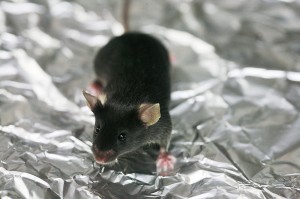TUESDAY, 14 FEBRUARY 2012
Assessing palaeontological data on the body sizes of mammals throughout the past 70 million years, along with experimental data on 23 generations of mouse, Dr. Alistair Evans of Monash University and his colleagues concluded that, in about 24 million generations, a mouse-sized animal could evolve into the size of an elephant: an extremely long time for an extremely large difference.The research, published in Proceedings of the National Academy of Sciences, also uncovered some surprising results. Firstly, that whales and their relatives had increased in size much faster than terrestrial mammals, and secondly, that decreases in body size occur 10 times faster than increases.
Both anomalies can be explained by the fact that growing large on land imposes complex constraints that limit the speed with which adaptations can occur. Whales, the team argues, may have been able to grow so large so fast due to a lack of mechanical constraints when living in water. The faster rate at which body size decreases occur may be due to the relative ease with which developmental processes can be halted, rather than extended. This may help to explain why island dwarfism of larger mammals - including dwarf elephants and ground sloths - appears to be so rife.
Through this work, the team hopes to reconcile past research that has sat on either side of the micro- (within species) and macro- (above the species level) evolutionary research divide.
Written by Nick Crumpton

